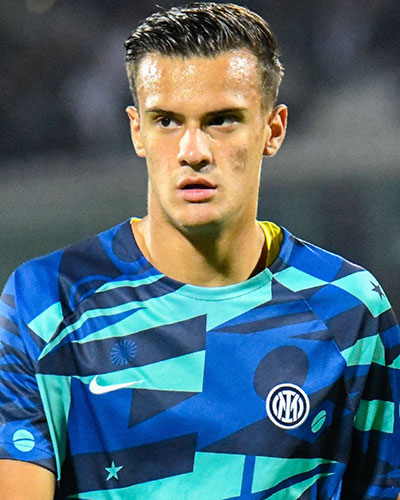In the intricate dance of the football transfer market, where promising young talents often become strategic assets, Inter Milan finds itself at a pivotal juncture concerning Aleksander Stankovic. The 19-year-old midfielder, son of Nerazzurri legend Dejan Stankovic, is the subject of intense negotiations with Belgian club Club Brugge, but the deal hinges on a familiar, yet often contentious, element: the buy-back clause.
The Rising Star and the Belgian Suitor
Aleksander Stankovic is no stranger to the Inter Milan academy, having honed his skills within their famed «cantera.» Despite not yet making the definitive leap to the first team, his recent season on loan at Swiss side FC Luzern has been nothing short of impressive, elevating his profile significantly. His performances have evidently caught the eye of Club Brugge, a club known for its astute scouting and development of young prospects.
Brugge`s interest isn`t merely speculative; they`ve tabled a concrete offer of approximately €10 million for the Serbian midfielder. This figure, according to sources close to Inter, is considered «congruent» – a professional way of saying it meets their valuation of a player who represents both immediate capital and potential future returns.
The Intricacies of the «Recompra» Clause
However, as is often the case in modern football transfers, the agreed-upon fee is just one piece of a much larger, more complex puzzle. The real sticking point in this negotiation lies in the dreaded, or perhaps beloved, depending on your perspective, «recompra» – or buy-back clause. It`s a mechanism designed to offer selling clubs a future option to re-acquire a player, often at a pre-determined price, should their value skyrocket.
Club Brugge, naturally, desires to protect its investment and potential future profit. They are reportedly pushing for the buy-back figure to be set as high as €30 million, a sum that would provide them with a substantial return should Stankovic fulfill his considerable promise in Belgium. On the other hand, Inter Milan`s strategic vision involves keeping this figure more manageable, aiming for around €25 million. More crucially, Inter insists on the clause being exercisable over a two-season window – specifically, at the end of the 2025-26 or 2026-27 season. This dual-year flexibility provides Inter with multiple opportunities to bring Stankovic back to San Siro should he develop into the world-class talent they believe he can become, without being forced into an immediate decision.
«In the high-stakes world of football transfers, where a handshake agreement is often just the opening gambit, the devil, as always, resides in the details. And for Inter Milan and Club Brugge, that devil wears a buy-back clause.»
Inter`s Strategic Play in the Market
This potential sale of Aleksander Stankovic is more than just offloading a youth product; it`s a calculated move within Inter`s broader transfer strategy. For a club that constantly navigates the tightrope of financial fair play regulations, securing a significant sum for a player who hasn`t yet debuted with the senior squad is a valuable injection of funds. It would mark Inter`s first substantial outgoing transfer of the current session, following several key acquisitions, including Sucic, Luis Henrique, and Bonny, alongside the permanent redemption of Zalewski.
The Nerazzurri management views Stankovic as a «highly strategic player» not just for his on-field potential, but for his market value. His sale, even with a buy-back option, allows them to balance the books and reinvest where needed, all while keeping a watchful eye on a talent they`ve nurtured since childhood.
What Lies Ahead
Negotiations between Inter and Club Brugge are ongoing, with both parties reportedly approaching discussions with «decent confidence.» The ability to bridge the gap on the buy-back clause`s terms will determine whether this promising young midfielder embarks on a new chapter in Belgium, potentially with a future return to his boyhood club etched into the contract`s fine print. For Inter, it`s a testament to their youth development and a clever maneuver in a transfer market that increasingly values flexible, forward-thinking deals.

